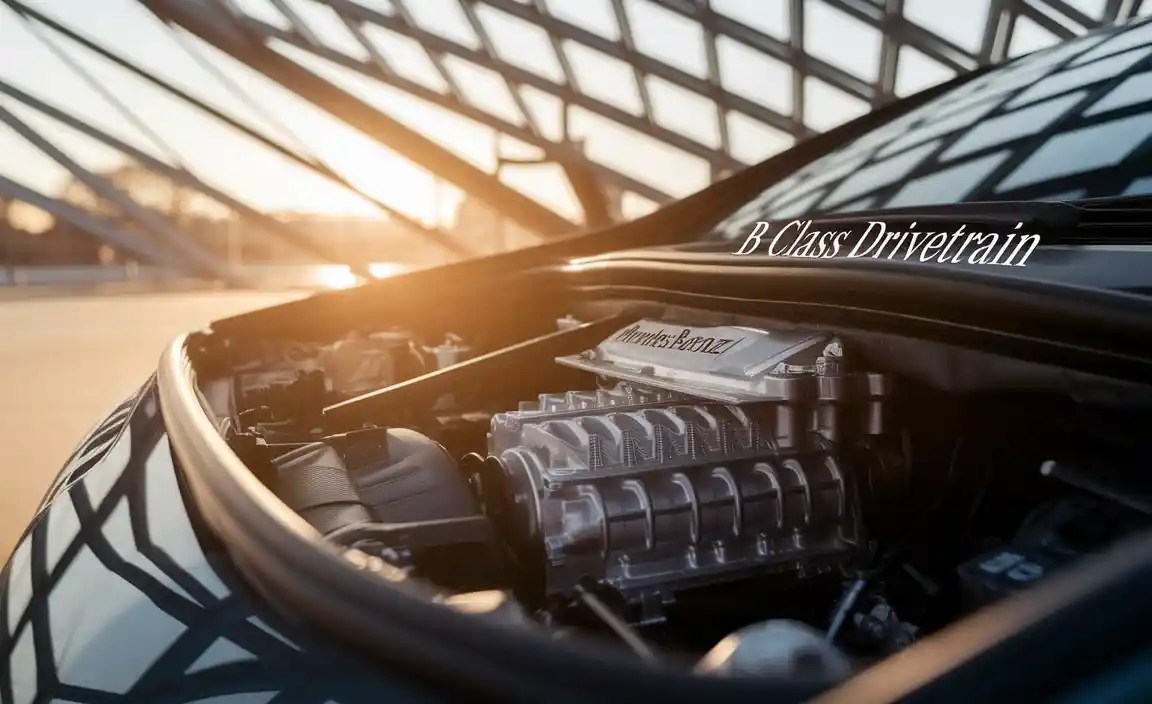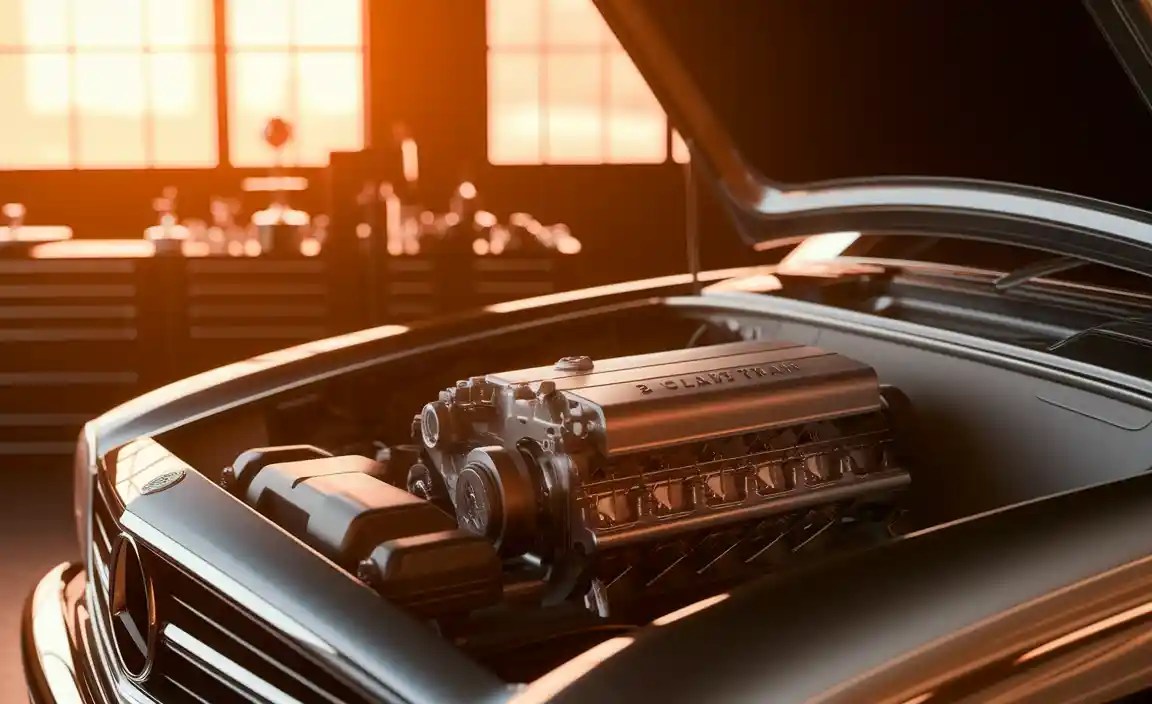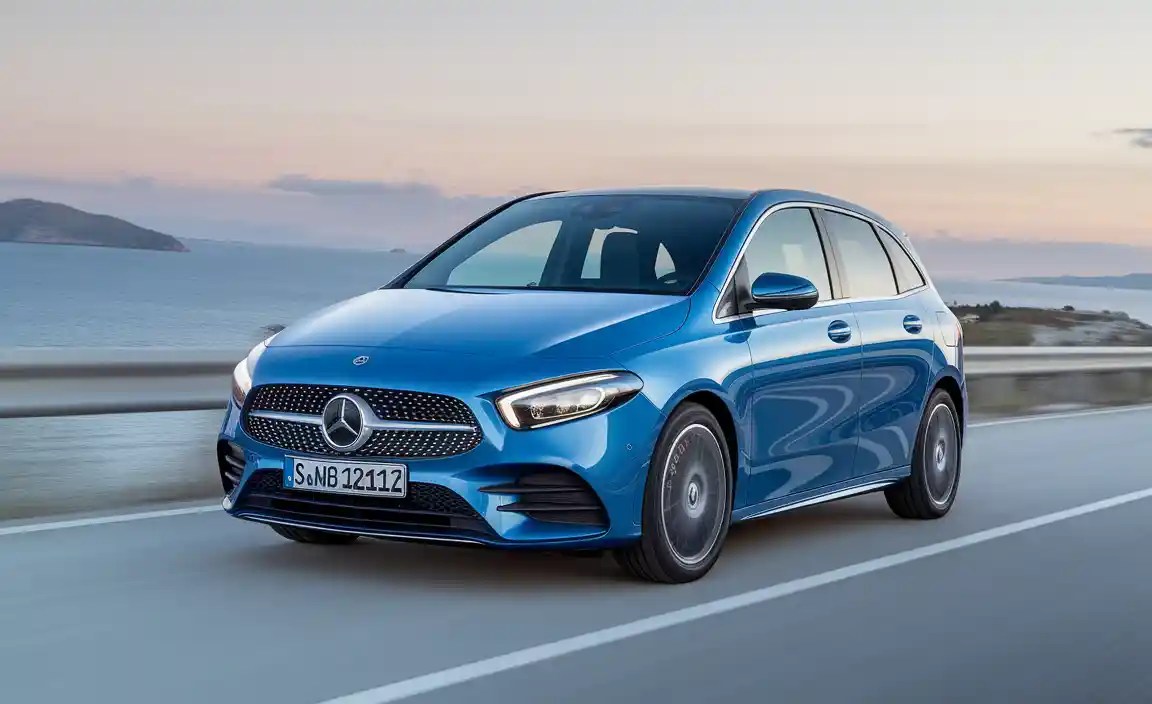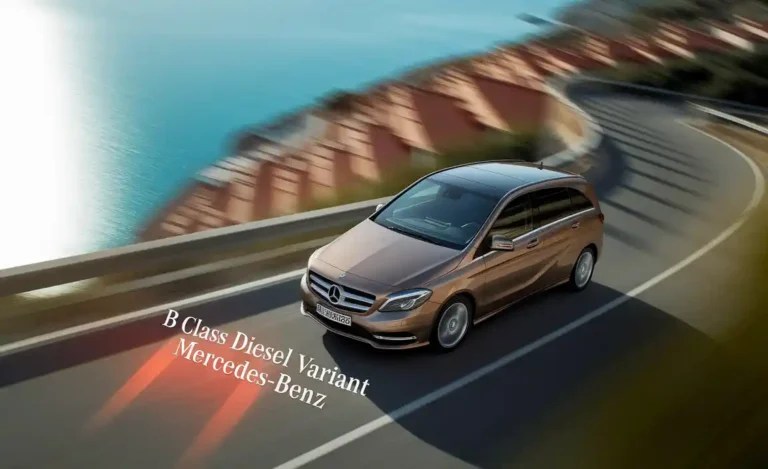B Class Drivetrain: Effortless Luxury
The Mercedes-Benz B-Class drivetrain offers a seamless blend of efficiency and refined performance, delivering an effortless and luxurious driving experience. It focuses on smooth power delivery and smart engineering for everyday comfort.

Unlocking the Secret to Effortless Luxury: Understanding Your B-Class Drivetrain
As a Mercedes-Benz enthusiast, I often get questions about what makes a particular model feel so special. The B-Class, in particular, stands out for its unique approach to luxury, especially when it comes to its drivetrain. Many owners and prospective buyers wonder: what exactly is the “B Class Drivetrain” and how does it contribute to that signature Mercedes-Benz feeling of effortless luxury? You might be curious about how it handles different road conditions, its fuel efficiency, or even its reliability. It’s perfectly normal to want to demystify these sophisticated systems. The good news is, understanding your B-Class drivetrain isn’t as complicated as it sounds. We’re going to break down exactly what makes it tick, focusing on its design, benefits, and what it means for your driving pleasure. Get ready to gain a whole new appreciation for the engineering beneath your B-Class!

What Exactly is the “B Class Drivetrain”?
When we talk about the “B Class Drivetrain,” we’re referring to the entire system responsible for transferring power from the engine to the wheels of a Mercedes-Benz B-Class vehicle. This includes the engine, transmisión, differential, and axles. Mercedes-Benz designs these components to work together harmoniously, creating a smooth, responsive, and efficient driving experience that is synonymous with the brand’s luxury image.
The Core Components of a B-Class Drivetrain
The B-Class drivetrain is a marvel of engineering, meticulously designed for efficiency and refinement. While specific configurations can vary slightly by model year and regional market, the fundamental principles remain consistent, all aimed at delivering that signature Mercedes-Benz smooth ride and responsive handling.
- Engine: The heart of the drivetrain. B-Class models typically feature advanced, fuel-efficient four-cylinder gasoline or diesel engines. These engines are tuned for a balance of power and economy, providing ample performance for daily driving needs while minimizing fuel consumption.
- Transmission: This is where much of the “effortless” magic happens. Most modern B-Class vehicles utilize an automatic transmission, often Mercedes-Benz’s own 7G-DCT (7-speed Dual Clutch Transmission) or similar advanced automatic systems. Dual-clutch transmissions offer incredibly smooth and rapid gear changes, feeling more like a continuous flow of power than traditional automatics.
- Front-Wheel Drive (FWD) or 4MATIC® All-Wheel Drive (AWD): The B-Class predominantly uses a front-wheel-drive architecture. This setup is known for its efficiency and excellent performance in everyday driving conditions, particularly in compact vehicles. For enhanced traction and stability, especially in adverse weather, optional 4MATIC® all-wheel drive is available on many B-Class models. 4MATIC® intelligently distributes power between the front and rear axles as needed, ensuring optimal grip.
- Differential: This crucial component allows the wheels on the same axle to rotate at different speeds when turning, preventing tire scrubbing and improving maneuverability.
- Axles and Driveshafts: These components connect the transmission and differential to the wheels, transmitting the torque generated by the engine to the road.
The Philosophy Behind the B-Class Drivetrain: Efficiency Meets Refinement
Mercedes-Benz doesn’t just build cars; they craft experiences. The B-Class drivetrain embodies this philosophy by prioritizing a specific set of goals that translate directly into what you, the driver, feel behind the wheel.

Key Design Principles
The engineering team behind the B-Class drivetrain focuses on several core principles that contribute to its effortless luxury:
- Smooth Power Delivery: A primary objective is to ensure that acceleration feels seamless and unhurried. This means minimizing any noticeable “jerkiness” when changing gears or when the engine responds to throttle input. The advanced transmissions and finely tuned engine management systems work in concert to achieve this.
- Fuel Efficiency: In a segment where economy is a significant consideration, the B-Class drivetrain is engineered to be as efficient as possible without compromising the luxury driving experience. This is achieved through advanced engine technology, optimized gearing, and reduced friction within the drivetrain components.
- Responsiveness: While prioritizing smoothness, the drivetrain must also feel responsive when you need to accelerate or overtake. The dual-clutch transmissions, for instance, are designed for quick shift times, ensuring that the car reacts promptly to your commands.
- Quiet Operation: A hallmark of luxury is a serene cabin. The B-Class drivetrain is designed to minimize noise and vibration, ensuring a quiet and comfortable ride, even at highway speeds. Excellent sound deadening and precise engineering reduce the intrusion of mechanical noise.
- Durability and Reliability: Mercedes-Benz vehicles are built to last. The drivetrain components are subjected to rigorous testing to ensure they meet the brand’s high standards for long-term durability and reliability.
Understanding the B-Class Drivetrain in Action
So, what does all this sophisticated engineering mean for your daily drive? The B-Class drivetrain translates these principles into tangible benefits that you experience every time you get behind the wheel.

Daily Driving and Comfort
For everyday commutes, errands, and family trips, the B-Class drivetrain excels. The initial acceleration from a standstill is smooth and progressive, making it easy to merge into traffic or navigate parking lots. The transmission shifts almost imperceptibly, so unless you are actively looking for gear changes, you might not even notice them occurring. This smooth operation significantly reduces driver fatigue on longer journeys and makes the car feel incredibly refined, even when driving in stop-and-go city traffic.
Performance and Handling
When you need to pick up the pace, the B-Class drivetrain responds admirably. The engine provides sufficient power for confident overtaking, and the transmission’s ability to select the right gear quickly ensures that you have power on demand. If equipped with 4MATIC®, you’ll feel an added sense of security and stability, particularly when cornering or driving on slippery surfaces. The overall feel is one of competent, secure, and enjoyable driving, rather than raw, aggressive performance – fitting perfectly for a luxury compact vehicle.
Fuel Economy Savings
The focus on efficiency means that B-Class owners can enjoy the benefits of a premium vehicle without the high running costs often associated with less efficient cars. The advanced engines and transmissions are optimized to make the most of every drop of fuel. For a comparison of fuel economy figures across different Mercedes-Benz models, you can refer to resources like the U.S. Department of Energy’s FuelEconomy.gov, which provides official EPA estimates.
B-Class Drivetrain Options: FWD vs. 4MATIC®
A key decision point for many B-Class buyers is the choice between the standard front-wheel-drive (FWD) system and the optional 4MATIC® all-wheel-drive. Each offers distinct advantages.
Front-Wheel Drive (FWD)
Pros:
- Fuel Efficiency: Generally lighter and less complex, FWD systems tend to offer slightly better fuel economy.
- Cost: Usually the standard, more affordable option.
- Packaging: Can allow for more interior or cargo space due to simpler packaging requirements.
Cons:
- Traction: Can be less effective in very slippery conditions (heavy snow, ice) compared to AWD.
- Performance Feel: Under hard acceleration, FWD can exhibit more torque steer (a tendency for the steering wheel to pull to one side).
4MATIC® All-Wheel Drive (AWD)
Pros:
- Traction and Stability: Provides superior grip and stability in a wider range of driving conditions, especially rain, snow, and on loose surfaces.
- Driving Dynamics: Can improve handling and cornering grip by distributing power more evenly.
- Confidence: Offers increased driver confidence, particularly in areas with unpredictable weather.
Cons:
- Fuel Economy: Typically slightly less fuel-efficient due to added weight and mechanical components.
- Cost: An additional option, increasing the vehicle’s purchase price.
- Complexity: More components mean potential for more complex maintenance down the line, though Mercedes-Benz systems are engineered for reliability.
Maintenance and Care for Your B-Class Drivetrain
Proper maintenance is crucial for ensuring the longevity and optimal performance of your B-Class drivetrain. While Mercedes-Benz vehicles are built to high standards, neglecting routine care can lead to premature wear and costly repairs. The good news is that most of the essential maintenance is straightforward and can often be performed by qualified technicians.
Scheduled Maintenance Intervals
Mercedes-Benz provides a detailed maintenance schedule for all its vehicles, including the B-Class. These schedules are typically outlined in your owner’s manual and are often integrated into the car’s onboard service reminder system (ASSYST PLUS). Key drivetrain-related checks and services include:
- Transmission Fluid and Filter Changes: The automatic transmission fluid (ATF) and filter are critical for the gearbox’s smooth operation and longevity. Mercedes-Benz recommends specific intervals for checking and, if necessary, changing the ATF and filter. For the 7G-DCT, for example, this is often around every 40,000 to 60,000 miles, but always consult your owner’s manual for the precise recommendation for your model year and specific transmission type.
- Differential Fluid Checks: While often considered “lifetime” fluid in many modern vehicles, it’s good practice to have the differential fluid inspected during major services. If there are any signs of leaks or degradation, it should be replaced.
- Drivetrain Component Inspections: During regular servicing, technicians will inspect various drivetrain components for leaks, wear, or damage. This includes checking seals, boots, CV joints, and driveshafts.
- Engine Oil and Filter Changes: While not strictly part of the “drivetrain” in terms of power transfer, regular engine oil and filter changes are paramount for the health of the engine, which is the ultimate source of power for the drivetrain.
What to Look Out For
While the B-Class drivetrain is robust, it’s always wise to be aware of potential signs of trouble. Early detection can prevent minor issues from becoming major problems:
- Strange Noises: Clunking, grinding, or whining sounds during acceleration, deceleration, or when turning can indicate issues with the transmission, differential, or CV joints.
- Rough Shifting: If your transmission starts shifting harshly, hesitates, or slips between gears, it’s a clear sign that the transmission may need attention.
- Vibrations: Unwanted vibrations, especially at certain speeds or during acceleration, could point to problems with driveshafts, CV joints, or even engine mounts that support the drivetrain.
- Leaking Fluids: Any visible fluid leaks under your car, particularly reddish (ATF) or brownish (gear oil) fluids, should be addressed immediately.
- Warning Lights: Modern cars have sophisticated diagnostic systems. If a drivetrain or transmission warning light illuminates on your dashboard, it’s important to have it checked by a qualified technician promptly.
DIY vs. Professional Service
While some basic checks, like visually inspecting for leaks, can be done by a dedicated owner, most drivetrain maintenance, especially transmission fluid services, differentials, and detailed inspections, is best left to professionals. Mercedes-Benz vehicles have specific procedures and require specialized tools and diagnostic equipment. For example, refilling transmission fluid often requires precise temperature monitoring. For reliable service and to maintain your warranty, it’s highly recommended to service your B-Class at a Mercedes-Benz dealership or a reputable independent specialist with Mercedes-Benz expertise.
Technology Enhancing the B-Class Drivetrain Experience
Mercedes-Benz consistently integrates cutting-edge technology to elevate the driving experience. The B-Class drivetrain benefits from several advanced systems that contribute to its effortless luxury and efficiency.
Advanced Transmission Technologies
As mentioned, the 7G-DCT dual-clutch transmission is a key player. It acts like two transmissions in one, with one clutch engaging odd gears and the other engaging even gears. This allows for lightning-fast, seamless shifts with minimal interruption of power flow. This technology, often found in high-performance vehicles, is adapted in the B-Class to provide a blend of sportiness and comfort.
Fuel-Saving Innovations
Beyond efficient engines and transmissions, Mercedes-Benz employs other technologies to maximize fuel economy. This can include features like ECO Start/Stop functionality, which automatically shuts off the engine when the car is stopped (e.g., at a traffic light) and restarts it instantly when you release the brake pedal. Regenerative braking, especially in hybrid variants (though less common in the B-Class compared to other Mercedes models), can also contribute to efficiency by recapturing energy that would otherwise be lost as heat.
Intelligent Drive Systems (Optional)
While not directly part of the mechanical drivetrain, optional Intelligent Drive systems often work in conjunction with the drivetrain’s capabilities. Features like Active Distance Assist DISTRONIC® (adaptive cruise control) can manage acceleration and braking smoothly, integrating with the transmission to provide a more relaxed driving experience. These driver-assistance systems enhance safety and comfort, further solidifying the “effortless luxury” aspect.
Comparing the B-Class Drivetrain to Other Mercedes-Benz Models
The B-Class drivetrain occupies a specific niche within the Mercedes-Benz lineup. It’s designed for practicality, efficiency, and accessible luxury, distinguishing it from its more performance-oriented or larger siblings.
B-Class vs. C-Class
The C-Class, typically featuring rear-wheel drive (RWD) or optional 4MATIC®, offers a more traditional luxury sedan driving dynamic. RWD generally provides a more balanced weight distribution and a sportier feel during spirited driving. The transmissions might also differ, with some C-Class models offering more gears or different tuning philosophies geared towards performance.
B-Class vs. GLA/GLB
The GLA and GLB crossovers are closely related to the B-Class in terms of platform and available powertrains. However, they often have a higher ride height and are more focused on versatility and SUV-like utility. While they might share similar FWD or 4MATIC® systems and transmissions, their SUV body styles and suspension tuning can lead to a different driving feel and handling characteristics compared to the more car-like B-Class.
B-Class vs. A-Class
The A-Class is often seen as the B-Class’s sportier sibling. While they share much of the same technology, the A-Class typically comes with more aggressive styling and a sportier suspension setup, aiming for a more dynamic driving engagement. The drivetrain components may be virtually identical, but the overall calibration and vehicle dynamics are tuned differently.
The B-Class drivetrain, therefore, stands out for its excellent balance, prioritizing comfort, efficiency, and everyday usability. It’s the perfect choice for those who want the prestige and refinement of a Mercedes-Benz in a practical, compact package.
Frequently Asked Questions About the B-Class Drivetrain
Here are some common questions beginner owners and potential buyers ask about the B-Class drivetrain:
Q1: What type of transmission does the Mercedes-Benz B-Class usually have?
A1: Most modern B-Class vehicles are equipped with an automatic transmission, most commonly a 7-speed Dual Clutch Transmission (7G-DCT). This offers quick, smooth shifts and excellent efficiency.
Q2: Is the B-Class rear-wheel drive or front-wheel drive?
A2: The B-Class primarily utilizes a front-wheel-drive (FWD) architecture. However, many models offer an optional 4MATIC® all-wheel-drive (AWD) system for enhanced traction and stability.
Q3: How often should the transmission fluid in a B-Class be changed?
A3: The recommended interval for changing the transmission fluid and filter varies by model year and transmission type, but it is typically around every 40,000 to 60,000 miles. Always refer to your owner’s manual for the exact service schedule.
Q4: Is the B-Class drivetrain good for fuel efficiency?
A4: Yes, the B-Class drivetrain is specifically engineered for excellent fuel efficiency through advanced engine technology, efficient transmissions, and its FWD layout, making it economical for daily driving.
Q5: What are the benefits of having 4MATIC® all-wheel drive on a B-Class?
A5: 4MATIC® provides improved traction and stability in various conditions, especially on slippery roads like snow, ice, or heavy rain. It can also enhance cornering grip and overall driving confidence.






